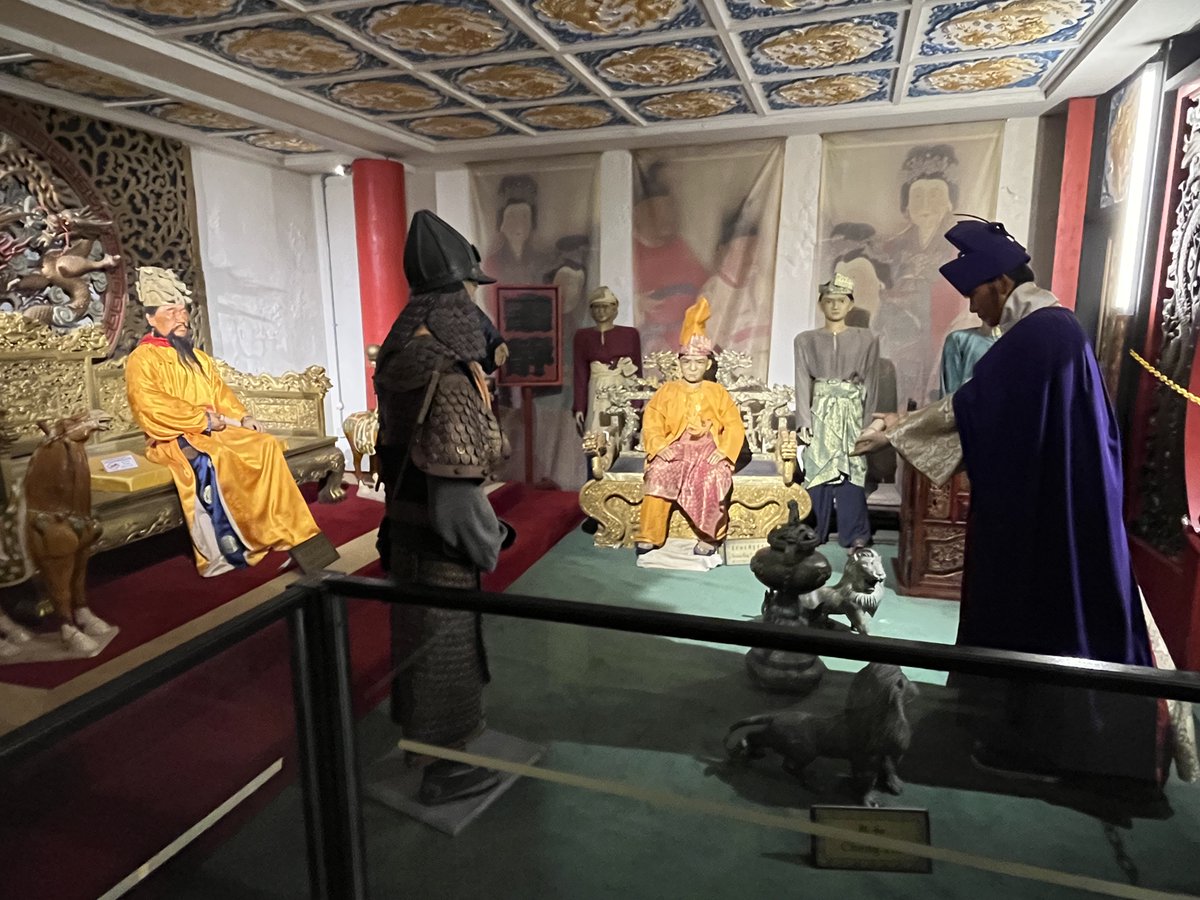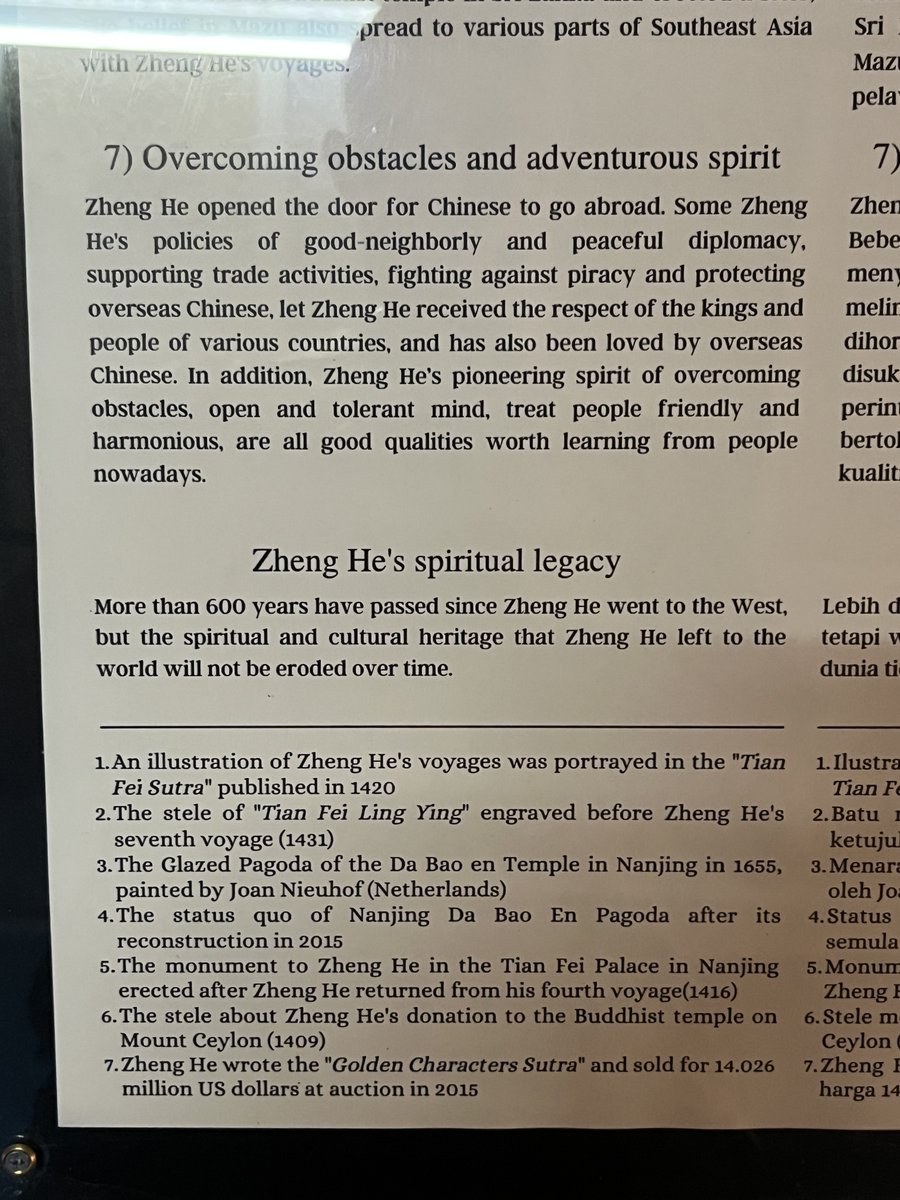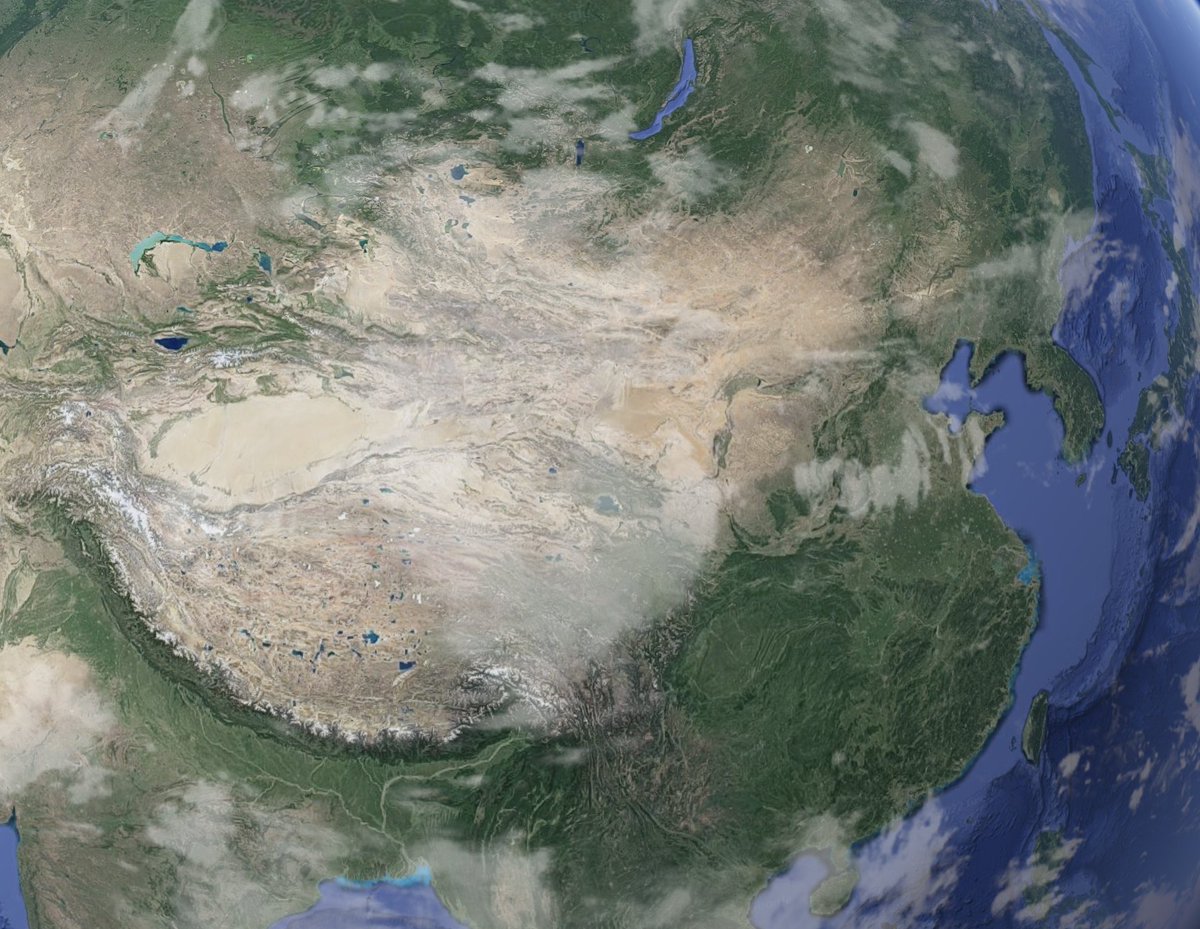Zheng He 鄭和 was a Ming Dynasty admiral and explorer whose story today is held up as one of triumph, peace, of the origins of China's maritime silk road, and as a key example in China's historical foreign relations. So of course, while in Malacca, I went to the Zheng He Museum! 

To start there is an example of Zheng He (standing) meeting the Sultan of Malacca (to his right). The Ming emperor is somehow also present. Notably, the Ming emperor is three steps higher than the sultan, which is the first clue to how the museum portrays Zheng He




The exhibition descriptions are more obvious. This description of Zheng He's "spiritual legacy" points to a "opening the door for Chinese to go abroad" with "good-neighborly and peaceful diplomacy, supporting trad activities, fighting against piracy and protecting Chinese" 

The word "harmonious" - a favorite of Chinese leaders talking about "harmonious society" 和谐社会 - is particularly important. It ties into a narrative of China as an inherently peaceful nation whose foreign relations have always prioritized trade over conflict (unlike Europeans)
It becomes more on the nose as the exhibit continues. In this panel Zheng He becomes a "Big-hearted Peace Ambassador" whose benevolence and tolerance "connected the people from different countries and races" and generally improved lives the world over. 

This is all in the same breath as mentioning the large armada of ships that accompanied the trade vessels (shown in this enormous moving model). Because nothing says peaceful trade mission like several hundred large ships turning up at your port. 

The museum is sponsored by a number of cultural and heritage institutions as part of the Maritime Silk Road, which while not surprising given the museum's topic, points to a sharp transnational increase in funding for institutions that facilitate supporting narratives 

Museums are far from neutral actors in how they portray and reinforce select historical narratives, and this museum is hardly unique in its approach. But it points to a reinforcement around the world of China's core narratives about its history and its present as a peaceful actor
For more on Zheng He - including his "rediscovery" in the Qing by Liang Qichao in the wake of the Chinese navy's humiliation by Japan and the West - see Tansen Sen's excellent recent article "Inventing the ‘Maritime Silk Road"
cambridge.org/core/journals/…
cambridge.org/core/journals/…
Eric Tagliacozzo's "In Asian Waters" is also a wonderful comparison of how Zheng He fits in to broader narratives about exploration, oceanic worlds, and historical legacies (this is a brief review of the book:
asianreviewofbooks.com/content/in-asi…
asianreviewofbooks.com/content/in-asi…
Also, thanks to my classmate Clare for sending this inscription from the Colombo National Museum in Sri Lanka, a trilingual stele (Chinese, Tamil, Persian) brought to the island by Zheng He purporting to be "an important cultural relic of the ancient Silk Route of the Sea"!




• • •
Missing some Tweet in this thread? You can try to
force a refresh








